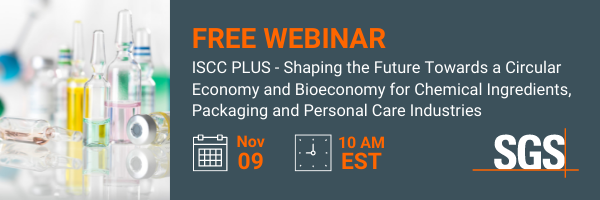Regulations & EHS&S
Moving forward with mutual recognition of cGMP inspections 8th February 2018
By our Editorial Team
Mark TePaske, PhD, Senior Director, Global Regulatory Affairs, Quality and Compliance at Cambrex Corporation, comments on th

Mark TePaske, PhD, Senior Director, Global Regulatory Affairs, Quality and Compliance at Cambrex Corporation, comments on the US and European regulators’ plans to mutually recognise each other’s pharmaceutical manufacturing inspection procedures.
At the end of October 2017, the US Food and Drug Administration (FDA) announced that it will recognise eight European drug regulatory authorities as capable of conducting inspections of manufacturing facilities that meet FDA requirements.1 The eight regulatory authorities found to be capable are those located in: Austria, Croatia, France, Italy, Malta, Spain, Sweden and the UK.
This development marks an important milestone to successful implementation of the amended Pharmaceutical Annex to the 1998 US–EU Mutual Recognition Agreement (MRA) that enables US and EU regulators to utilize each other’s good manufacturing practice (cGMP) inspections of pharmaceutical manufacturing facilities.
We spoke to Mark TePaske, PhD, Senior Director, Global Regulatory Affairs, Quality and Compliance at Cambrex Corporation, a life sciences company that provides products and services for small molecule active pharmaceutical ingredients (APIs). Cambrex has cGMP manufacturing facilities in the US and Europe, and customers worldwide, so the FDA’s announcement of mutual recognition could have a direct and potentially positive impact on the way the organization operates.
Pharmaceutical manufacturing frequently involves domestic and overseas ingredients and/or manufacturing steps – how complicated can this make things, from a view of cGMP inspections along the supply chain of a product?
Dr TePaske: Pharmaceutical companies are required to ensure the integrity of their entire pharmaceutical product supply chain and eliminate the risk of contamination, counterfeiting and misbranding. Proper control of the supply chain is important to business success and continuity, while poor control can pose significant risks to the business, quality, the environment and patient safety.
Supply chain integrity is controlled by the traceability and pedigree of materials used for manufacturing. As a general principle, the shorter the supply chain, the more secure it will be, which makes proper management less complex.
In the past, did inspections from US and European regulators differ significantly?
Dr TePaske: My personal experience has been that inspections performed by US and EU regulators are quite similar as all of the Health Authorities share the same goal of ensuring public safety. The EU and US API cGMP regulations have been harmonized for many years, and each of the Cambrex manufacturing sites has been required to satisfy the same regulations.
Inspections are performed to verify the suitability of facilities and equipment, with verification also undertaken to ensure that facilities are adequately staffed with knowledgeable and well-trained personnel, who are following procedures that control all operations that may affect the quality of drugs. All of this must be properly documented and the raw data must be readily available for review during the inspection. Data must be collected, analysed, reported, and retained in a manner that accurately, truthfully and completely represents what actually occurred.
The US FDA has commonly performed domestic inspections without prior notice, whereas until very recently, EU inspectorates had provided prior notice. Whilst EU inspectorates are now starting to perform unannounced domestic inspections, foreign inspections are still only performed with prior notice. Prior notification allows sites to prepare for the inspection to ensure data, facilities and personnel are available for review.
US and EU inspections follow similar process flows that include introductions, inspectional activities, wrap-up meetings, follow-up and inspection closure. Confidential information is examined and inspectors’ credentials need to be verified. Adverse findings (if any) are discussed and findings are documented in a formal report issued by the authority. The systems and timing for follow-up and closure vary between the FDA and EU authorities. Sites are expected to remedy adverse findings and remediation plans are submitted to the relevant health authority in a formal, written report. When successful, the inspection is formally closed at the conclusion of the process by the health authority by issuance of a report or renewed certificates/licences. Unsuccessful inspections and unacceptable responses may prompt legal action.
In effect, a site needs to operate in a state of audit readiness at all times, and cGMP compliance entails operating in a state of control and doing the job right every time.
What sort of impact is mutual recognition of pharmaceutical manufacturing inspection procedures likely to have on Cambrex Corporation?
Dr TePaske: The MRA covers both surveillance and pre-approval inspections. However, initially, the MRA is expected to be used for surveillance inspections. The US FDA has stated that due to the special requirements of pre-approval deadlines (such as unique application deadlines and a specialised focus on the product), it will not always be possible for the FDA to rely upon an inspectorate within the EU to conduct Prior Approval Inspections (PAIs). Over time, the MRA may prove to be reliable for PAIs as well.
The MRA affects facilities in the US and the EU where EU authorities will inspect facilities within their own countries and the FDA will inspect facilities within the US. The EU and the FDA have agreed to recognise each other’s inspections and can choose to forego conducting their own inspections in the other’s countries. Both the FDA and the EU have reserved the right to inspect facilities in each other’s countries at any time.
Cambrex Corporation has manufacturing sites in Italy, Sweden and the United States. In fact, in May 2017, Cambrex hosted simultaneous inspections performed by the US FDA and L’Agenzia Italiana del Farmaco. Ideally, mutual recognition will reduce the number and/or frequency of health authority inspections performed at Cambrex’s sites to obtain the same number of regulatory approvals.
Does the development of mutual recognition reflect the US’s current political pro-business and jobs-growth attitude?
Dr TePaske: The EU announced that it had found the US inspectorate to be capable during June, and the FDA announced that eight EU inspectorates have been determined to be capable during October 2017, with ‘capable’ meaning that the inspectorate is effective in ensuring public safety. The decisions were informed and intentional.
The process for mutual recognition was initiated during the Clinton administration and was re-invigorated during the Obama administration. It was accomplished through cooperation in establishing common goals and expectations, coordination of efforts, effective communication, mutual respect and commitment. Agencies mutually scrutinized each other to prove competency, capability and trust-worthiness. I believe this was accomplished through years of hard work.
Would you like to see this mutual recognition rolled out to any other countries?
Dr TePaske: The US FDA is scheduled to complete its assessment of all 28 EU inspectorates by mid-2019. I fully expect this programme to be expanded as evaluations are completed. Additionally, the MRA is initially targeted for surveillance inspections. Over time, communications and scheduling systems may evolve to allow MRA to be suitable for PAIs as well.
I would like to see MRA reduced to practice before discussing expansion to include additional inspectorates.
References
1. FDA. FDA news release, 31st October 2017 (www.fda.gov).
Interview with:
Mark TePaske, PhD, Senior Director, Global Regulatory Affairs, Quality and Compliance at Cambrex Corporation, One Meadowlands Plaza East Rutherford, NJ 07073, USA
www.cambrex.com



